-
 Bitcoin
Bitcoin $118400
0.47% -
 Ethereum
Ethereum $3836
2.20% -
 XRP
XRP $3.157
2.98% -
 Tether USDt
Tether USDt $0.9999
-0.03% -
 BNB
BNB $801.5
1.31% -
 Solana
Solana $180.9
2.07% -
 USDC
USDC $0.9999
-0.02% -
 Dogecoin
Dogecoin $0.2225
2.50% -
 TRON
TRON $0.3285
-1.02% -
 Cardano
Cardano $0.7789
2.60% -
 Hyperliquid
Hyperliquid $43.60
2.39% -
 Sui
Sui $3.892
4.41% -
 Stellar
Stellar $0.4229
3.34% -
 Chainlink
Chainlink $18.01
3.98% -
 Hedera
Hedera $0.2745
6.77% -
 Bitcoin Cash
Bitcoin Cash $582.3
3.38% -
 Avalanche
Avalanche $23.77
1.04% -
 Ethena USDe
Ethena USDe $1.001
0.01% -
 Toncoin
Toncoin $3.493
3.59% -
 Litecoin
Litecoin $110.0
2.48% -
 UNUS SED LEO
UNUS SED LEO $8.936
-0.37% -
 Shiba Inu
Shiba Inu $0.00001304
2.49% -
 Uniswap
Uniswap $9.999
1.09% -
 Polkadot
Polkadot $3.897
3.26% -
 Monero
Monero $308.6
-0.83% -
 Dai
Dai $0.9999
-0.01% -
 Bitget Token
Bitget Token $4.504
-0.04% -
 Pepe
Pepe $0.00001154
2.95% -
 Cronos
Cronos $0.1471
3.06% -
 Ethena
Ethena $0.6691
19.53%
How are transactions on a public chain verified? How are decentralized ledgers recorded
Nodes validate transactions on public chains by checking sender's funds and format, then miners group them into blocks and use PoW to add them to the blockchain securely.
May 16, 2025 at 08:14 am
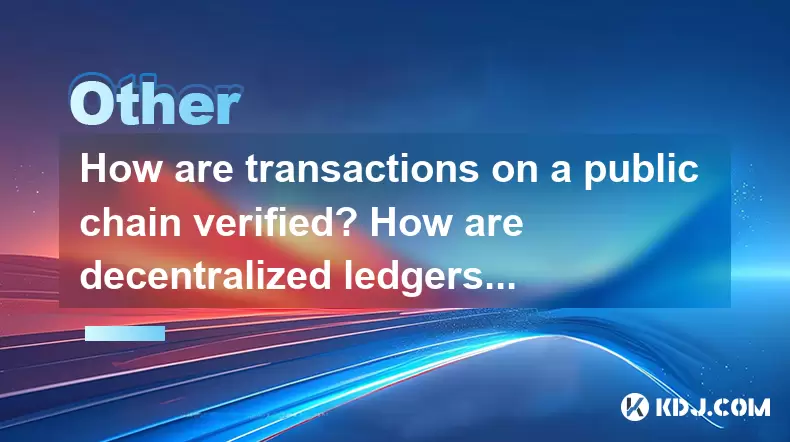
Introduction to Transaction Verification on Public Chains
Public blockchains are the backbone of many cryptocurrencies, enabling secure and transparent transactions without the need for a central authority. The process of verifying transactions on these networks is crucial to maintaining the integrity and security of the blockchain. Transaction verification involves several steps, primarily managed by a network of nodes and miners, to ensure that each transaction is legitimate and recorded accurately on the decentralized ledger.
The Role of Nodes in Transaction Verification
Nodes play a pivotal role in the verification process of transactions on a public chain. These nodes are essentially computers that participate in the network by maintaining a copy of the entire blockchain. When a new transaction is initiated, it is broadcast to the network where nodes first validate the transaction's basic parameters. This includes checking if the sender has the necessary funds and if the transaction format is correct.
- Verify transaction format: Nodes check if the transaction adheres to the specific blockchain's protocol.
- Check sender's balance: Nodes confirm that the sender has sufficient funds to complete the transaction.
- Validate transaction inputs and outputs: Nodes ensure that the transaction inputs and outputs are correctly formatted and match the sender's intent.
Once these initial checks are passed, the transaction is considered valid and moves to the next stage of the verification process.
Mining and the Creation of Blocks
After nodes validate a transaction, it is grouped with other transactions into a block. Miners then compete to solve complex mathematical problems, a process known as proof-of-work (PoW), to add this block to the blockchain. The first miner to solve the problem gets to add the block to the chain and is rewarded with cryptocurrency.
- Create a block: Transactions are grouped into a block by miners.
- Solve the proof-of-work puzzle: Miners compete to solve a cryptographic puzzle, which requires significant computational power.
- Add the block to the blockchain: The successful miner adds the block to the blockchain and receives a reward.
This process ensures that transactions are not only verified but also securely recorded on the blockchain, making it nearly impossible to alter past transactions.
Consensus Mechanisms and Transaction Verification
Consensus mechanisms are critical for ensuring that all nodes on the network agree on the state of the blockchain. The most common consensus mechanism used in public blockchains is proof-of-work (PoW), as mentioned earlier. However, other mechanisms like proof-of-stake (PoS) and delegated proof-of-stake (DPoS) are also used in various blockchains.
- Proof-of-Work (PoW): Miners compete to solve a mathematical puzzle, and the first to solve it adds a block to the chain.
- Proof-of-Stake (PoS): Validators are chosen to create new blocks based on the number of coins they hold and are willing to "stake" as collateral.
- Delegated Proof-of-Stake (DPoS): Token holders vote for a small number of delegates who are responsible for validating transactions and creating blocks.
Each of these mechanisms has its own way of ensuring that transactions are verified and recorded securely on the decentralized ledger.
Recording Transactions on Decentralized Ledgers
Once transactions are verified, they are recorded on the decentralized ledger, which is essentially the blockchain itself. Each block contains a list of transactions, and once a block is added to the chain, it becomes a permanent part of the ledger. This process ensures that all participants on the network have an up-to-date and accurate record of all transactions.
- Transaction data: Each transaction includes details such as sender, recipient, amount, and timestamp.
- Block structure: Transactions are grouped into blocks, which also contain a reference to the previous block (hash), ensuring the chain's integrity.
- Immutable records: Once a block is added to the blockchain, it cannot be altered, making the ledger tamper-proof.
The decentralized nature of the ledger means that no single entity controls the data, enhancing the security and transparency of the system.
Security Measures in Transaction Verification
Ensuring the security of transactions on a public chain involves several layers of protection. Cryptographic algorithms are used to secure transactions and ensure that only authorized parties can access and modify the data. Additionally, the distributed nature of the network means that any attempt to alter the blockchain would require control over a majority of the network's nodes, a feat that is practically impossible due to the sheer number of participants.
- Cryptographic signatures: Transactions are signed with the sender's private key, ensuring that only the sender can initiate the transaction.
- Hash functions: Each block contains a hash of the previous block, creating a chain of blocks that is difficult to alter.
- Network consensus: The consensus mechanism ensures that all nodes agree on the state of the blockchain, preventing fraudulent transactions from being recorded.
These security measures work together to protect the integrity of the blockchain and ensure that transactions are verified and recorded accurately.
Frequently Asked Questions
Q: What happens if a transaction is invalid during the verification process?
A: If a transaction is found to be invalid during the verification process, it is rejected by the nodes and not included in any block. The sender may need to correct the transaction and resubmit it for verification.
Q: Can transactions on a public chain be reversed?
A: Transactions on a public chain are designed to be irreversible once they are confirmed and added to the blockchain. This is due to the immutable nature of the blockchain, which ensures that once a transaction is recorded, it cannot be altered or deleted.
Q: How long does it take for a transaction to be verified and recorded on the blockchain?
A: The time it takes for a transaction to be verified and recorded on the blockchain can vary depending on the specific blockchain and its network conditions. For example, Bitcoin transactions typically take about 10 minutes to be confirmed, while Ethereum transactions can be confirmed in a matter of seconds to minutes.
Q: What is the role of miners in transaction verification?
A: Miners play a crucial role in transaction verification by grouping transactions into blocks and solving complex mathematical problems to add these blocks to the blockchain. They are incentivized to do this work through rewards in the form of cryptocurrency, ensuring the security and integrity of the blockchain.
Disclaimer:info@kdj.com
The information provided is not trading advice. kdj.com does not assume any responsibility for any investments made based on the information provided in this article. Cryptocurrencies are highly volatile and it is highly recommended that you invest with caution after thorough research!
If you believe that the content used on this website infringes your copyright, please contact us immediately (info@kdj.com) and we will delete it promptly.
- Pudgy Penguins Price Prediction: Buying Opportunity or Insider Dump?
- 2025-07-31 18:50:35
- Penny Coin Power: Unearthing 20x Potential in Undervalued Crypto
- 2025-07-31 20:10:14
- Shrapnel, GalaChain, and China Gaming: A New Frontier
- 2025-07-31 19:10:35
- Mutuum Finance, Bitcoin, and Market Analysis: Decoding the Latest Trends
- 2025-07-31 19:30:13
- Dogecoin Howl: Bullish Signals and Analyst Bites – Is the Meme Coin Ready to Pounce?
- 2025-07-31 18:30:16
- Decoding Crypto Presales, Ethereum's Role, and Navigating a Tricky Altcoin Season
- 2025-07-31 18:30:16
Related knowledge

How to start a business using blockchain?
Jul 28,2025 at 12:36am
Understanding the Basics of Blockchain TechnologyBefore diving into the process of starting a business using blockchain, it's crucial to understand wh...
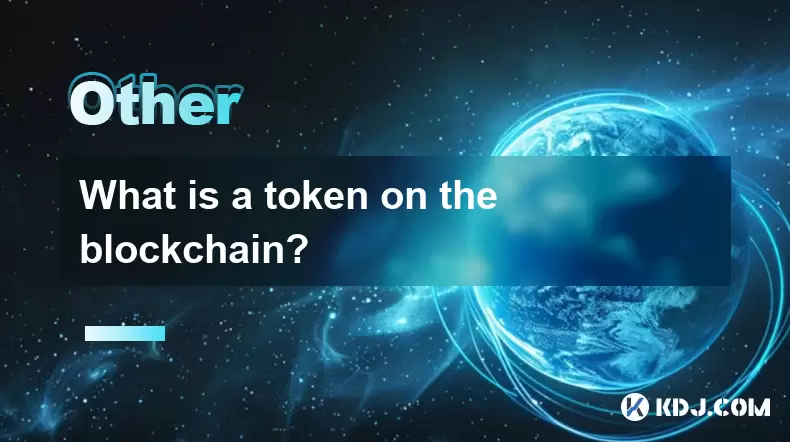
What is a token on the blockchain?
Jul 21,2025 at 07:00am
Understanding the Concept of a TokenIn the realm of blockchain technology, a token is a digital representation of an asset or utility that exists on a...
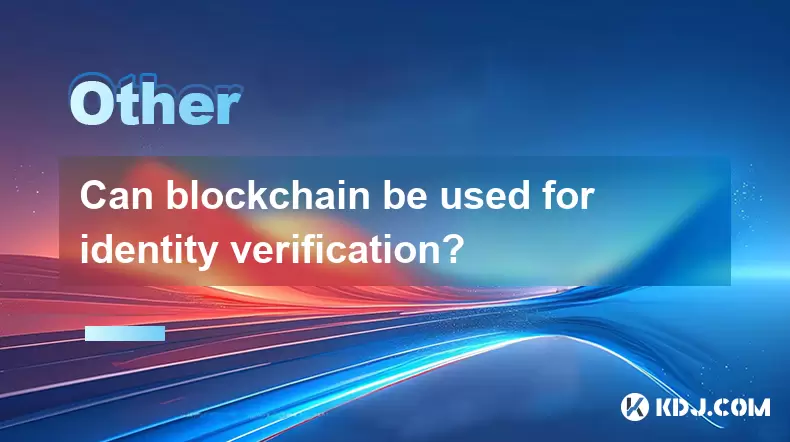
Can blockchain be used for identity verification?
Jul 18,2025 at 02:14pm
Understanding Identity Verification in the Digital AgeIn the modern digital landscape, identity verification has become a critical component for ensur...
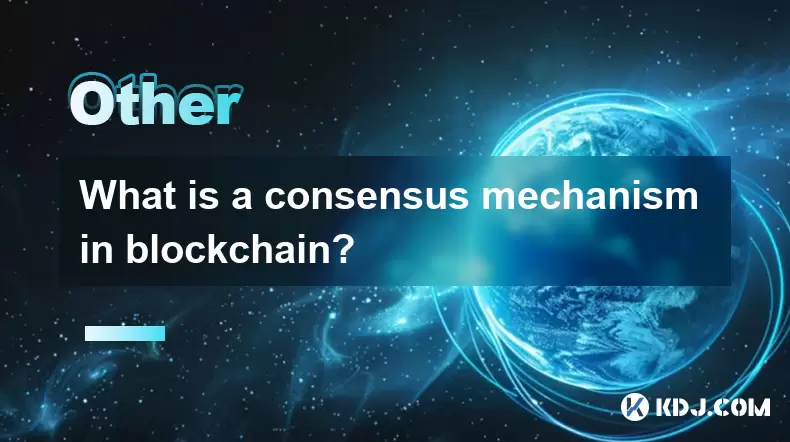
What is a consensus mechanism in blockchain?
Jul 21,2025 at 03:01am
Understanding the Basics of Consensus MechanismsA consensus mechanism is a critical component of any blockchain network. It refers to the process by w...
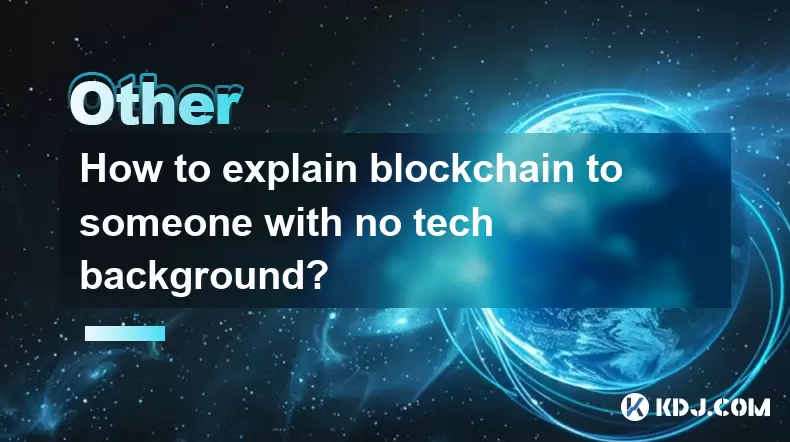
How to explain blockchain to someone with no tech background?
Jul 18,2025 at 11:08pm
Understanding the Basics of BlockchainTo explain blockchain to someone with no tech background, it's essential to start with simple analogies and avoi...
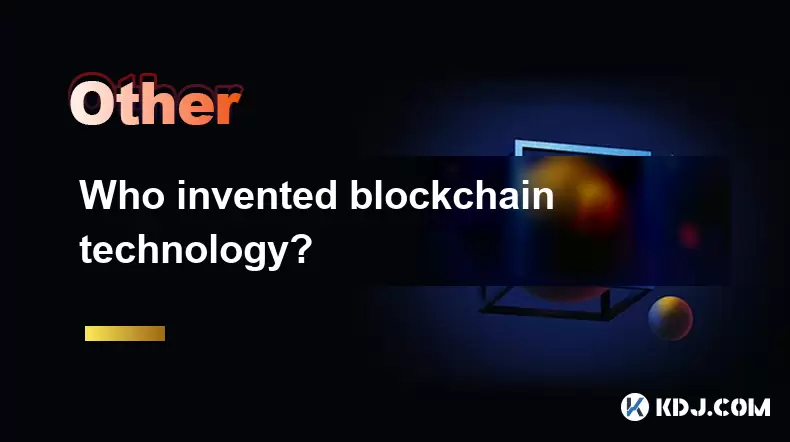
Who invented blockchain technology?
Jul 23,2025 at 01:28am
Origins of Blockchain TechnologyBlockchain technology did not emerge from a single inventor or institution. Instead, it evolved through a series of ac...

How to start a business using blockchain?
Jul 28,2025 at 12:36am
Understanding the Basics of Blockchain TechnologyBefore diving into the process of starting a business using blockchain, it's crucial to understand wh...

What is a token on the blockchain?
Jul 21,2025 at 07:00am
Understanding the Concept of a TokenIn the realm of blockchain technology, a token is a digital representation of an asset or utility that exists on a...

Can blockchain be used for identity verification?
Jul 18,2025 at 02:14pm
Understanding Identity Verification in the Digital AgeIn the modern digital landscape, identity verification has become a critical component for ensur...

What is a consensus mechanism in blockchain?
Jul 21,2025 at 03:01am
Understanding the Basics of Consensus MechanismsA consensus mechanism is a critical component of any blockchain network. It refers to the process by w...

How to explain blockchain to someone with no tech background?
Jul 18,2025 at 11:08pm
Understanding the Basics of BlockchainTo explain blockchain to someone with no tech background, it's essential to start with simple analogies and avoi...

Who invented blockchain technology?
Jul 23,2025 at 01:28am
Origins of Blockchain TechnologyBlockchain technology did not emerge from a single inventor or institution. Instead, it evolved through a series of ac...
See all articles

























































































